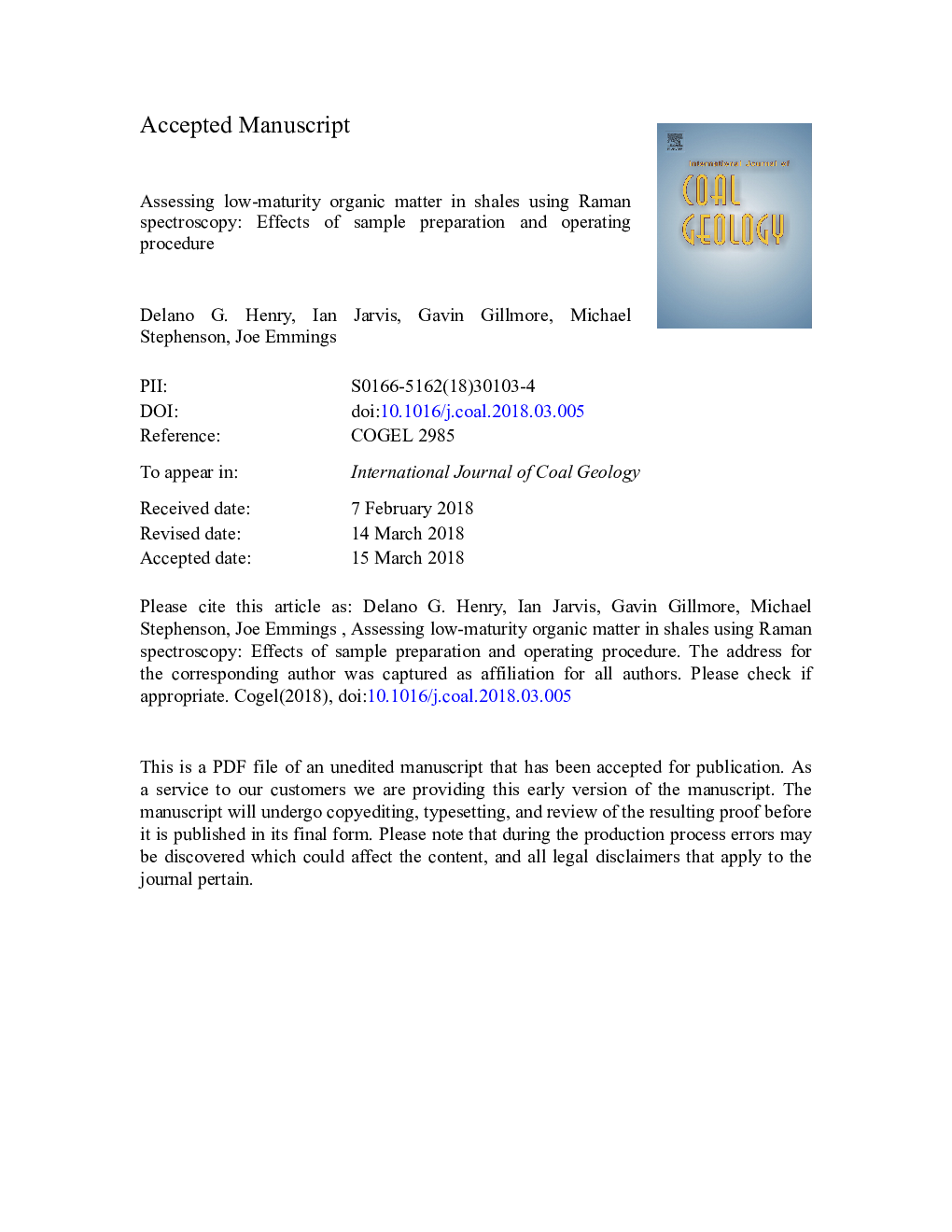| Article ID | Journal | Published Year | Pages | File Type |
|---|---|---|---|---|
| 8123411 | International Journal of Coal Geology | 2018 | 53 Pages |
Abstract
Laser Raman spectroscopy is used to assess the thermal maturity of organic matter in sedimentary rocks, particularly organic-rich mudstones. However, discrepancies exist between quantified Raman spectral parameters and maturity values obtained by vitrinite reflectance. This has prevented the adoption of a standard protocol for the determination of thermal maturity of organic matter (OM) by Raman spectroscopy. We have examined the factors influencing the Raman spectra obtained from low-maturity OM in potential shale gas reservoir rocks. The inconsistencies in Raman results obtained are due to three main factors that are critically evaluated: (1) different operational procedures, including experiment setup and spectral processing methods; (2) different methods of sample preparation; (3) the analysis of diverse types of OM. These factors are scrutinized to determine the sources of inconsistency and potential bias in Raman results, and guidance is offered on the development of robust and reproducible analytical protocols. We present two new Raman parameters for un-deconvolved spectra named the DA1/GA ratio (area ratio of 1100-1400â¯cmâ1/1550-1650â¯cmâ1) and SSA (scaled spectrum area: sum of total area between 1100 and 1700â¯cmâ1) that offer potential maturity proxies. An automated spreadsheet procedure is presented that processes raw Raman spectra and calculates several of the most commonly used Raman parameters, including the two new variables.
Related Topics
Physical Sciences and Engineering
Earth and Planetary Sciences
Economic Geology
Authors
Delano G. Henry, Ian Jarvis, Gavin Gillmore, Michael Stephenson, Joseph F. Emmings,
